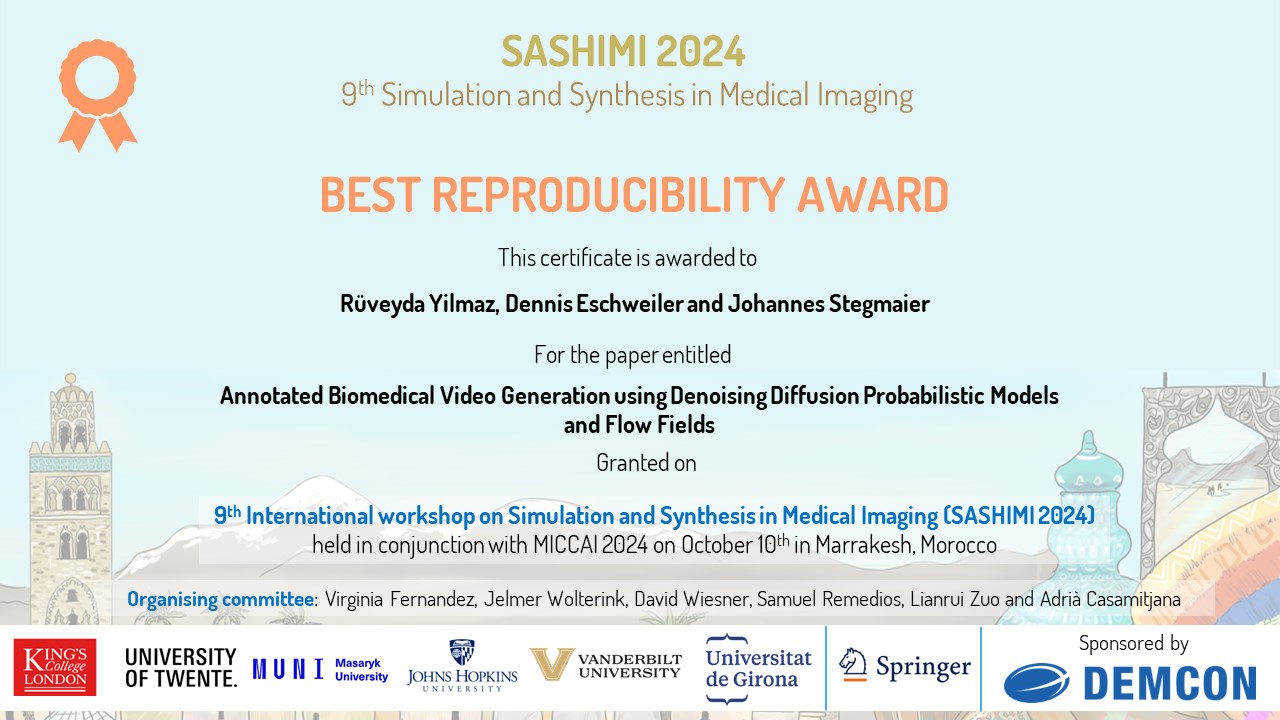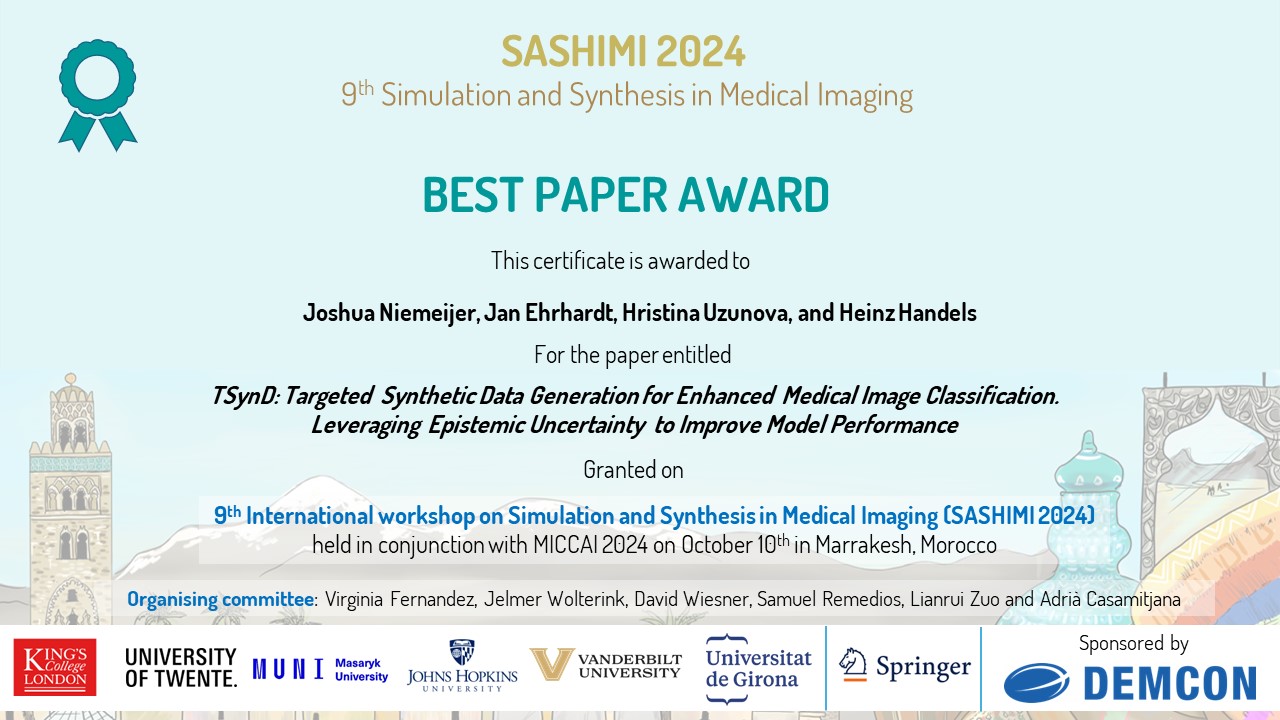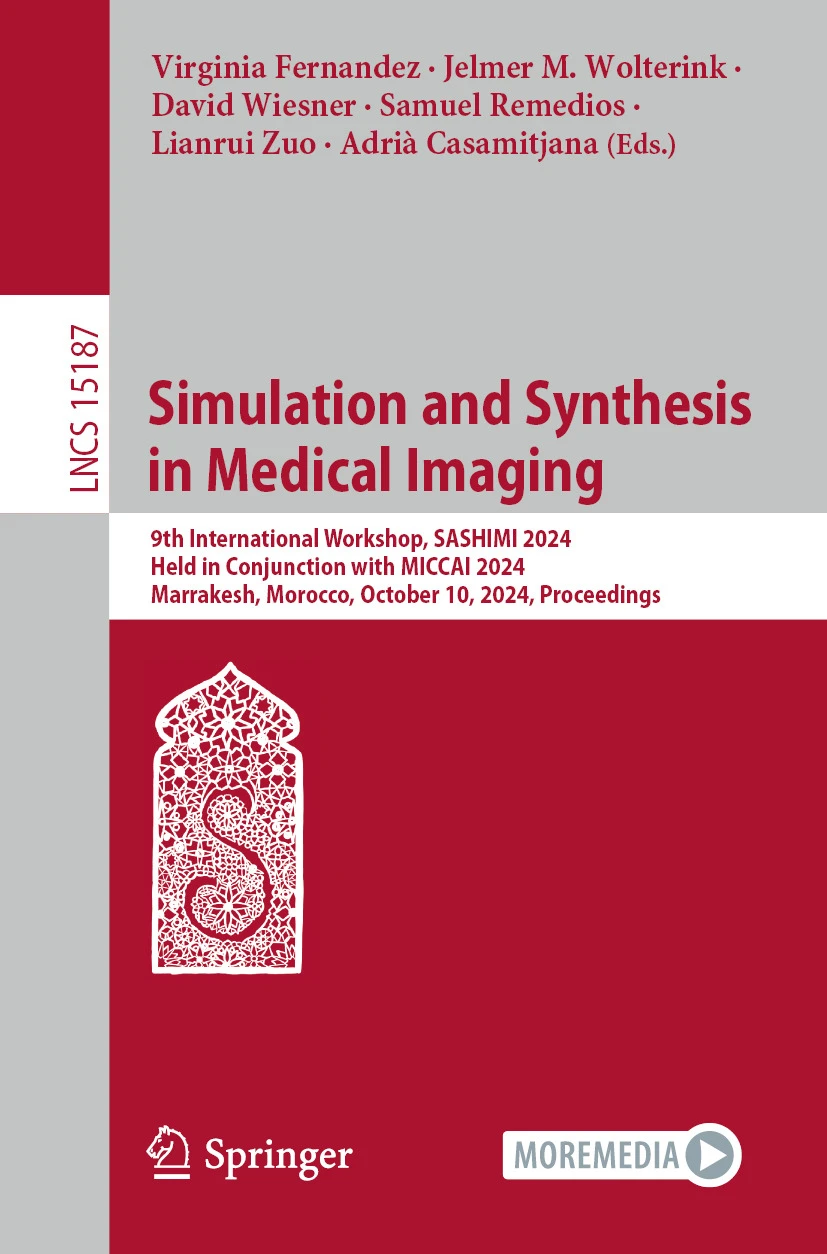





Keynote title: Medical Image Synthesis for Data-Centric AI: Lessons Learnt
See more information in the KEYNOTE SPEAKER section!
The Medical Image Computing and Computer Assisted Intervention (MICCAI) community needs data with known ground truth to develop, evaluate, and validate computerized image analytic tools, as well as to facilitate clinical training. Synthetic data are ideally suited for this purpose. Another motivation to generate synthetic data is to improve the generalizability of deep learning and machine learning algorithms that are affected by domain shift issues.
To generate synthetic data, a full range of models underpinning image simulation and synthesis, also referred to as image translation, cross-modality synthesis, image completion, domain adaptation, etc. have been developed over the years: (i) deep learning methods including fully-supervised, semi-supervised, self-supervised, unsupervised, transfer, and multi-task learning; (ii) deep learning model architectures including Generative Adversarial Network (GAN), Variational Auto-Encoder (VAE), Flows, Transformers, and etc; (iii) machine learning methods using hand-crafted features; (iv) detailed mechanistic models (top–down), which incorporate priors on the geometry and physics of image acquisition and formation processes; (v) complex spatio-temporal computational models of anatomical variability, organ physiology, and morphological changes in tissues or disease progression; (vi) applications of synthetic images including improving image quality, segmentation, tracking, detection, registration, and etc.
The goal of the Simulation and Synthesis in Medical Imaging (SASHIMI) workshop is to bring together all those interested in such problems in order to engage in invigorating research, discuss current approaches, and stimulate new ideas and scientific directions in this field. The objectives are to (a) bring together experts on image synthesis to raise the state of the art; (b) hear from invited speakers outside of the MICCAI community, for example in the areas of transfer learning, generative adversarial networks, or variational autoencoders, to cross-fertilize these fields; and (c) identify challenges and opportunities for further research. We also want to identify the suitable approaches to evaluate the plausibility of synthetic data and to collect benchmark data that could help with the development of future algorithms.
